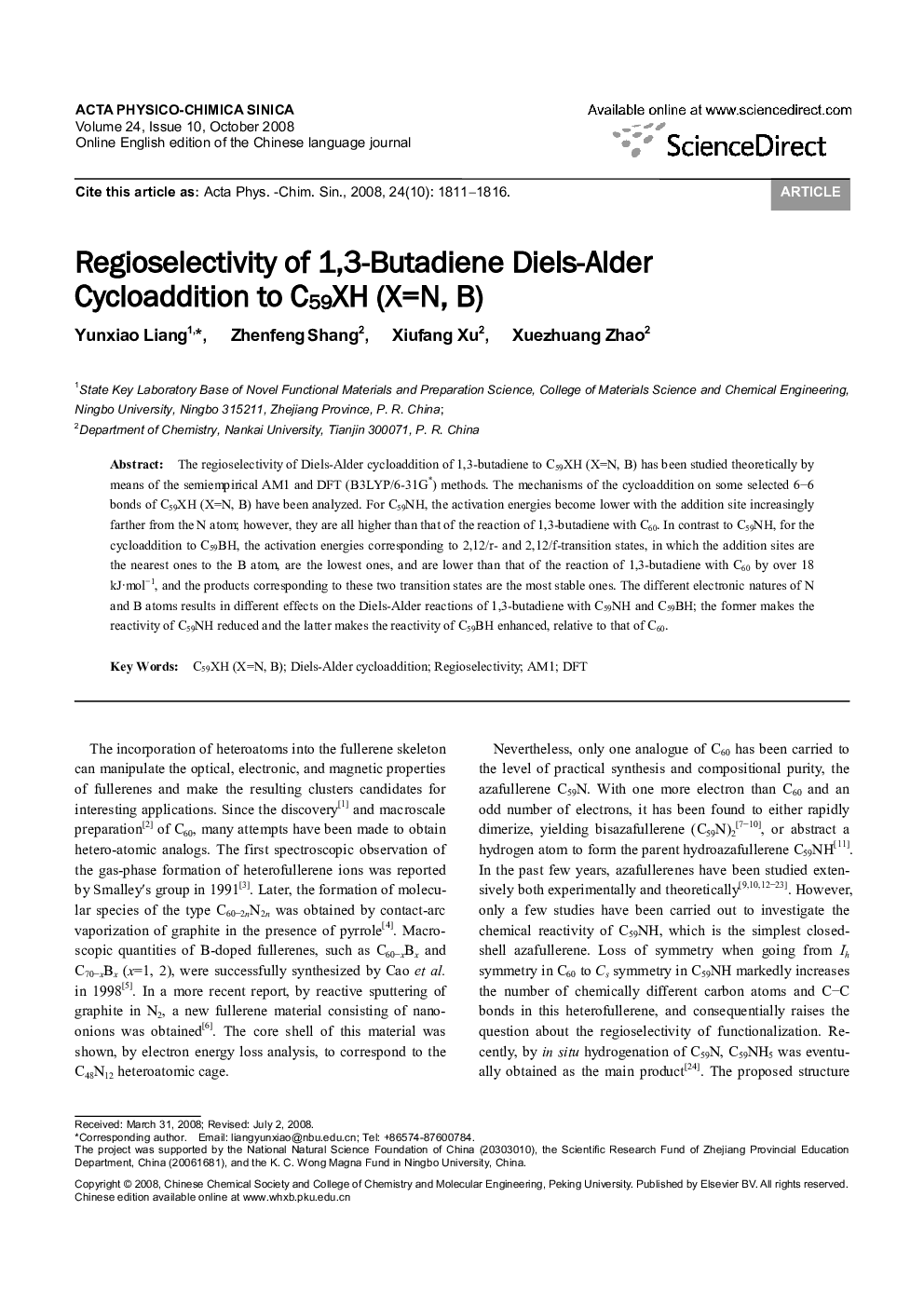| Article ID | Journal | Published Year | Pages | File Type |
|---|---|---|---|---|
| 7831584 | Acta Physico-Chimica Sinica | 2008 | 6 Pages |
Abstract
The regioselectivity of Diels-Alder cycloaddition of 1,3-butadiene to C59XH (X=N, B) has been studied theoretically by means of the semiempirical AM1 and DFT (B3LYP/6-31G*) methods. The mechanisms of the cycloaddition on some selected 6.6 bonds of C59XH (X=N, B) have been analyzed. For C59NH, the activation energies become lower with the addition site increasingly farther from the N atom; however, they are all higher than that of the reaction of 1,3-butadiene with C60. In contrast to C59NH, for the cycloaddition to C59BH, the activation energies corresponding to 2,12/r- and 2,12/f-transition states, in which the addition sites are the nearest ones to the B atom, are the lowest ones, and are lower than that of the reaction of 1,3-butadiene with C60 by over 18 kJ·molâ1, and the products corresponding to these two transition states are the most stable ones. The different electronic natures of N and B atoms results in different effects on the Diels-Alder reactions of 1,3-butadiene with C59NH and C59BH; the former makes the reactivity of C59NH reduced and the latter makes the reactivity of C59BH enhanced, relative to that of C60.
Related Topics
Physical Sciences and Engineering
Chemistry
Physical and Theoretical Chemistry
Authors
Yunxiao Liang, Zhenfeng Shang, Xiufang Xu, Xuezhuang Zhao,
